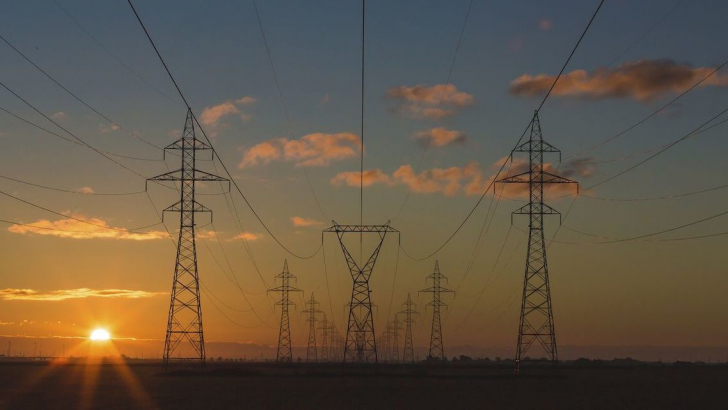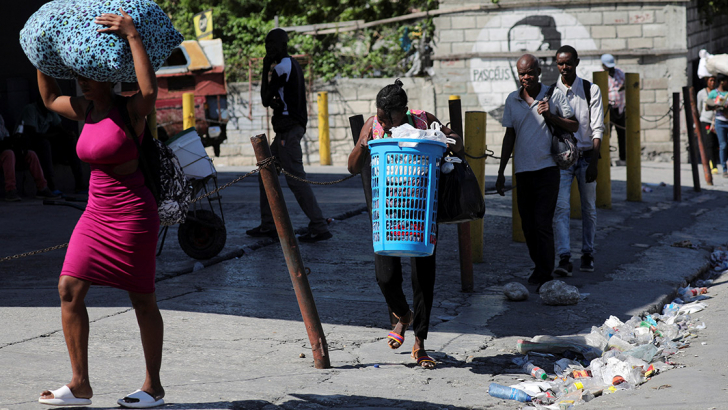
The one taking place in Dubai will be the COP of oil companies, for better or for worse. “They have to decide whether they will be partners in the fight against climate change or not,” stated Fatih Birol during the presentation of the report The Oil and Gas Industry in Net Zero Transition, released on November 23rd, 2023.
COP28 is the last call for the oil and gas industry – “the moment of truth,” as defined by IEA, urging the industry to take at least three crucial initiatives. The first is to reduce emissions resulting from extraction, processing, and transport of oil and gas. The second is to significantly increase investments in the clean energy sector. The third is to stop putting forth false promises of sustainability, such as large-scale carbon capture and storage technologies.
Similar calls to action are far from new; never before, however, an international agency historically not hostile towards this industry has expressed such a clear stance on these issues. Indeed, IEA was established by the OECD after the 1973 energy crisis to specifically monitor the oil market and secure its supplies.
🗣 “Oil & gas producers around the world need to make profound decisions about their future place in the global energy sector”
— International Energy Agency (@IEA) November 23, 2023
More from @fbirol on the choice facing the oil & gas industry: fueling the climate crisis or becoming part of the solution 👉 https://t.co/m4XGEB6ssB pic.twitter.com/Jilo3czapZ
Emissions
Even before tackling the issue of reducing fossil fuel consumption, to lower emissions from the energy sector the industry must begin by controlling emissions from production activities, which alone account for about 15% (approximately 5 billion tons of CO2, equivalent to the annual emissions of the United States) of the nearly 37 Gigatonnes (Gt) released into the atmosphere in 2022 from the entire sector. To these emissions contribute the so-called ‘leaks’ or methane losses from pipelines (almost half of the 5 Gt), and the deliberate burning of fuel (referred to as ‘flaring’ and ‘venting’) to reduce pressure in the pipelines.
“You must commit to lower your emissions by 60% by 2030,” Birol argued during the presentation of the report. He added: “This would grant the industry an entry ticket to become a partner in the fight against climate change.” These measures, in fact, represent minimal and urgent steps that should have already been adopted years ago. By 2040, these emissions should be almost entirely eliminated. “These interventions can be implemented immediately and at a feasible cost for companies,” stressed Birol.
If the oil and gas industry wants to be taken seriously in climate discussions, it has to clean up its act
— International Energy Agency (@IEA) November 24, 2023
A starting point is tackling emissions from its own operations, which account for almost 15% of global emissions – the same as the entire US
More: https://t.co/CLUcGingEI pic.twitter.com/x5S1RAShmb
Investments
The other shift needed is on the financial front. Out of $1800 billion globally spent in 2023 in low-emission energy sources, the Oil&Gas sector has only contributed around 1% of the total. Among thousands of private, national, and state-owned companies, only four represent more than half of that 1%. “For the moment the oil and gas industry as a whole is a marginal force in the world’s transition to a clean energy system,” IEA states in the report edited by energy economist Tim Gould and analyst Cristophe McGlade.
The oil & gas industry faces a moment of truth at #COP28.
— International Energy Agency (@IEA) November 23, 2023
It must choose: keep contributing to the climate crisis or embrace the shift to clean energy.
Its efforts to date aren’t encouraging. It accounts for only 1% of global clean energy investment → https://t.co/sL8URnOlis pic.twitter.com/KCSnLPkE8m
The roughly $20 billion (that 1%) that the industry invests in clean energy represent about 2,5% of the $800 it spends in capital costs (CapEx), while average annual revenues have been around $3500 billion since 2018.
“All of this contradicts the claims about clean energy coming from the Oil&Gas industry,” Birol argued. He urges the sector to set a target consistent with the Paris Agreement to keep global warming below the critical threshold of 1,5°C. “To be genuine partners in the fight against climate change, this 2,5% figure should reach 50% by 2030.” In addition to the present investments, further funding is required to limit type 1 and type 2 emissions.
Currently, the oil & gas industry invests about 2.5% of its total capital spending in clean energy.
— International Energy Agency (@IEA) November 23, 2023
If oil & gas producers want to play their full part in meeting Paris Agreement goals, 50% of their investments should be going to clean energy by 2030 → https://t.co/eZ4oXDuh3w pic.twitter.com/zvRzM4PL62
Carbon Capture and Storage
In another report released in October 2023, the World Energy Outlook, IEA indicated that the demand for oil and gas should reach its peak by 2030, and then begin to decline. However, with current policies (STEPS, Stated Policies Scenario), the subsequent decline in the curve would be barely noticeable, essentially representing a stabilization of demand that is not compatible with the Paris Agreement.
A projection compatible with the 1,5°C target (Net Zero climate neutrality scenario) would see a 75% decline in the demand for oil and gas compared to current levels. However, by implementing all sustainability declarations outlined in government documents (APS, Announced Pledges Scenario) the reduction in demand would only reach 45% by mid-century.
It is interesting to note that in the Net Zero scenario, the demand for fossil fuels is not entirely eliminated by mid-century. This is because they are still employed in sectors where they are challenging to substitute, such as the steel and cement industries. Additionally, they are still used as raw materials but not burned, for example, in the production of plastics (derived from oil) or to extract hydrogen (from methane).
Under today’s policy settings, global oil & gas use is set to peak by 2030
— International Energy Agency (@IEA) November 24, 2023
But after this, demand reductions aren't quick enough to meet climate goals
If all countries achieve their climate pledges, demand falls 45% by 2050. 1.5 °C requires a 75% drop → https://t.co/x6jm3HCz1w pic.twitter.com/YVdiqy58FX
Hence, emissions still produced by mid-century will need to be absorbed. This is why IEA assigns a significant role to carbon capture, use, and storage technologies (CCUS or simply CCS) in the Net Zero scenario.
“In our perspective, it is an important technology in certain contexts; however, over the last 20 years, CCUS has been a story of disappointments,” stated Birol, referring to the numerous projects that were funded but later abandoned due to their economic and environmental unsustainability.
“Stating that CCS would allow the Oil&Gas sector to keep the current production trend while lowering emissions is pure fantasy,” the agency director said. The report highlights that to operate CCS facilities to absorb more than 30Gt of CO2, over 26000 terawatt-hours (TW/h) of electricity would be needed, which is more than the global electricity consumption in 2022. Moreover, an annual dedicated investment of $3500 billion would be required, which is equivalent to the entire sector’s average earnings in recent years.
“It’s impossible to continue using the oil and gas we currently produce together with CCUS, the numbers don’t add up,” Birol clearly stated. “We want to emphasise this because we must not give room to false hope. CCS should not be an excuse to remain on the same path as usual. Reducing emissions from fossil fuels implies reducing fossil fuel demand.”
Reducing fossil fuel emissions means reducing fossil fuel demand. Carbon capture is not a magic solution
— International Energy Agency (@IEA) November 23, 2023
Failing to cut demand would require an implausibly large amount of CCUS - with annual investment surging from $4 billion last year to $3.5 trillion ➡️ https://t.co/ALC0Tmftc5 pic.twitter.com/VHQJ6tkdOe
Negotiations
“The increase in clean energy (especially photovoltaic and wind sources, ed.) is now unstoppable,” Fatih Birol added. “The fight against climate change will continue even without the help of major oil and gas producers. However, it would be a more challenging path.”
The oil and gas industry have much to contribute to the energy transition, not only in terms of financial investments, which have been lacking so far, but also in terms of technical expertise.
In addition to the development of CCS and DAC (Direct Air Capture) technologies, a significant contribution, according to the IEA, can come from the fields of hydrogen, biofuels, geothermal energy, even offshore wind, along with electric vehicle charging infrastructure, and plastic recycling.
“Companies such as Adnoc can and must do more,” argued Tim Gould during the presentation of the report. “Even Saudi Aramco (the national Saudi company, ed.), which holds a strong leadership position in the sector, can step up.”
While oil & gas production is far lower in net zero transitions, some investment in supply is still needed
— International Energy Agency (@IEA) November 25, 2023
But the $800 billion currently invested in the sector each year is double what's required in 2030 on a pathway to limiting global warming to 1.5 °C: https://t.co/Dz4DHCYEgS pic.twitter.com/LJWQzcaRmP
“Many producers say they will be the ones to keep producing throughout transitions and beyond. They cannot all be right,” states the report, because by 2050 the global production of oil and gas should be reduced to a small fraction of current levels.
Thus, the task of the COP28 presidency should be to reconcile the parties, not just UN member countries but also big corporations, to decide who will continue to provide the gas and oil the world will need in the next 30 years, and who must diversify their investments and business models in the energy market.
My story is pretty straightforward - the UAE planned to use the COP28 climate talks to make oil deals. https://t.co/zK7dkyN1V8
— Justin Rowlatt (@BBCJustinR) November 27, 2023
However, as emerged from confidential documents obtained by the BBC, negotiations seem to have already taken a different turn. UAE would be using their favourable position to engage in business with other countries. For instance, with China, Adnoc would be “willing to jointly evaluate international LNG [liquefied natural gas] opportunities” in Mozambique, Canada and Australia. The Abu Dhabi national oil company would also be ready to support the development of fossil fuel resources in Colombia. UAE would have held similar talks with 27 other countries.
With such premises, even IEA’s call seems to be destined to go unheard, and COP28 risks becoming a moment of truth that adds to many others already recorded in the past.
This article was translated into English by Sofia Belardinelli. The original version of this article is available here.
ALSO READ:




